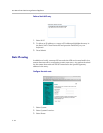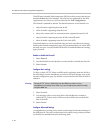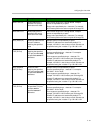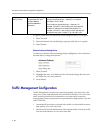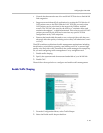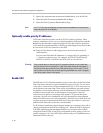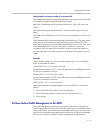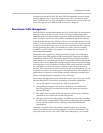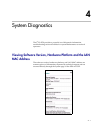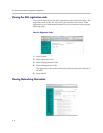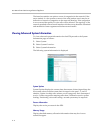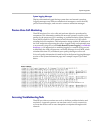
User Manual V
2
IU 4350 Converged Network Appliance
3 - 72
applied to traffic in both the upstream (LAN to WAN) and downstream (WAN
to LAN) direction. Each direction is independent of the other and can support
different size priority queues.
Classifying
High priority voice and video traffic generated by endpoint devices is
automatically identified by the V
2
IU’s VoIP Application Layer Gateway. Other
VoIP devices (not making use of the ALG) can be defined as high-priority by
their IP address. The user configures these addresses into the priority list in the
Traffic Shaper section of the 4350 web GUI.
As the 4350 processes packets they are identified as either high or low priority
based on this configuration. Packets identified as high priority are marked as
such in the TOS bits of their IP header, allowing prioritization by downstream
routers. The TOS field is set to 12 hexadecimal “minimize delay and maximize
throughput.” This value overwrites any prior value.
Upstream Traffic Management
The 4350 appliance uses a combination of Class Based Queuing and simple
classless queuing to send data in the upstream direction. The Class Based
Queue (CBQ) consists of two priority classes (high and low), a scheduler to
decide when packets need to be sent, and a traffic shaper to rate-limit by
delaying packets before they are sent. Each of these is described in more detail
below.
Priority classes
Voice and video traffic is placed in the high-priority queue and data traffic is
placed in the low-priority queue. The IP header TOS field of packets in the
high-priority queue is set to “minimize delay and maximize throughput”.
Scheduler
High-priority data is polled before low priority data, thereby minimizing the
latency for voice and video traffic. High-priority data is allowed to use up to
85% of the total WAN bandwidth. Although preferential treatment is given to
high-priority data, 15% of the WAN link is always reserved so that
low-priority data is not starved.
High priority data is polled before lower priority data to reduce overall latency
for voice traffic.
Traffic shaper
To smooth bursts from high speed data links (typically from the LAN Ethernet
heading to the WAN) the 4350 appliance uses a buffer that clocks data out at
rates not exceeding automatically-calculated maximums. Low-priority data is



